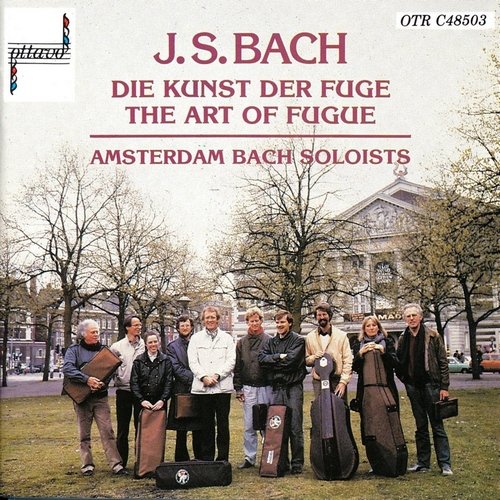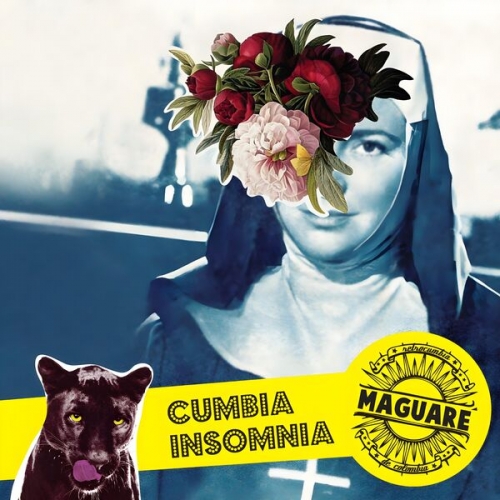Amsterdam Bach Soloists - J.S. Bach - Kunst der Fuge (1989)

Artist: Amsterdam Bach Soloists
Title: J.S. Bach - Kunst der Fuge
Year Of Release: 1989
Label: Ottavo
Genre: Classical
Quality: FLAC (tracks+.cue,log,booklet)
Total Time: 01:12:09
Total Size: 348 Mb
WebSite: Album Preview
Tracklist: Title: J.S. Bach - Kunst der Fuge
Year Of Release: 1989
Label: Ottavo
Genre: Classical
Quality: FLAC (tracks+.cue,log,booklet)
Total Time: 01:12:09
Total Size: 348 Mb
WebSite: Album Preview
01. Contrapunctus I (2:50)
02. Contrapunctus II (2:02)
03. Contrapunctus III (2:58)
04. Contrapunctus IV (2:57)
05. Canon alla Ottava (3:00)
06. Contrapunctus V (2:28)
07. Contrapunctus VI (4:04)
08. Contrapunctus VII (2:38)
09. Cannon alla Decima, Contrapunto alla Terza (5:39)
10. Contrapunctus VIII (rectus) (1:54)
11. Contrapunctus VIII (inversus) (1:53)
12. Contrapunctus IX (rectus) (2:14)
13. Contrapunctus IX (inversus) (2:15)
14. Contrapunctus X (2:10)
15. Contrapunctus XI (3:06)
16. Cannon alla Duodecima in Contrapunto alla Quinta (2:38)
17. Contrapunctus XII (5:26)
18. Contrapunctus XIII (3:45)
19. Cannon per Augmentationem in Contrario Motu (7:10)
20. Contrapunctus XIV (7:40)
21. Choral "or deinen Thron tret’ ich hiemit" 3:23
Performers:
Amsterdam Bach Soloists
The Amsterdam Bach Soloists comprise an ensemble of ten or so musicians. They play modern instruments but base their musical approach on ''an undogmatic use of authentic interpreting practice, so that the rich potentialities of the modern instruments can be combined with the baroque way of performing, which is in keeping with the accomplishments of Nikolaus Harnoncourt with the Concertgebouw Orchestra''. Most of the players are, in fact, drawn from the Concertgebouw, though there are some from Frans Bruggen's Orchestra of the Eighteenth Century.
Nowadays Bach's didactic but very beautiful The Art of Fugue, is widely regarded as a work for solo harpsichord. Bach himself left no precise indication concerning instrumentation but the music was engraved in open score which places each individual voice or strand of the texture on a separate stave. This practice was not uncommon in contrapuntal keyboard works and is one of several features pointing towards the solo harpsichord as being Bach's most likely intention. Nevertheless, since 1924, when the Swiss musician Wolfgang Graeser set the canons and fugues for various combinations of instruments, the practice of performing The Art of Fugue with a mixed ensemble has remained popular. Indeed, this new version is the fifth such performance that I have reviewed in as many years and it is, in many ways, the most interesting of them. Regular readers of these columns will know that I defend the right of performers to choose what kind of instrumental approach to adopt in this musically profound, scientific and affecting work. Anyone at all unfamiliar with it may well find an ensemble performance more illuminating in the early stages of his or her acquaintanceship, such a solution especially with a mixed instrumental group, highlights and clarifies the intricacies of Bach's counterpoint. Eventually, though, the solo harpsichord approach probably will prove the most enduringly satisfying.
Nobody who preserves an open mind on these issues is going to be disappointed in this performance by the Amsterdam Bach Soloists. The instrumentation consists of four-part string texture with oboe, cor anglais and bassoons thus keeping to the spirit if not the letter of Graeser's edition. Harnoncourt's influence is clearly at work in the playing and most apparently in the fourpart Contrapunctus VI ''in Stile Francese'' with its sharply dotted rhythms in the manner of a French ouverture. Few performances that I know of make such sense of the movement as this one. Equally successful are the pairs of mirror fugues which dance along in a most engaging and infectious way. The last quadruple fugue is played in the unfinished state in which Bach left it—one present-day writer draws an analogy between this work and the comparably ambitious yet unfinished cathedral of Beauvais—and the group gives an affecting account of the choral, BWV668a which, of course, has nothing to do with Bach's original scheme but was included in the edition of 1751 so that the work should have a proper conclusion rather than remain in an incomplete state. Here the cantus firmus is given to the cor anglais and very beautiful it is, too.'
Nowadays Bach's didactic but very beautiful The Art of Fugue, is widely regarded as a work for solo harpsichord. Bach himself left no precise indication concerning instrumentation but the music was engraved in open score which places each individual voice or strand of the texture on a separate stave. This practice was not uncommon in contrapuntal keyboard works and is one of several features pointing towards the solo harpsichord as being Bach's most likely intention. Nevertheless, since 1924, when the Swiss musician Wolfgang Graeser set the canons and fugues for various combinations of instruments, the practice of performing The Art of Fugue with a mixed ensemble has remained popular. Indeed, this new version is the fifth such performance that I have reviewed in as many years and it is, in many ways, the most interesting of them. Regular readers of these columns will know that I defend the right of performers to choose what kind of instrumental approach to adopt in this musically profound, scientific and affecting work. Anyone at all unfamiliar with it may well find an ensemble performance more illuminating in the early stages of his or her acquaintanceship, such a solution especially with a mixed instrumental group, highlights and clarifies the intricacies of Bach's counterpoint. Eventually, though, the solo harpsichord approach probably will prove the most enduringly satisfying.
Nobody who preserves an open mind on these issues is going to be disappointed in this performance by the Amsterdam Bach Soloists. The instrumentation consists of four-part string texture with oboe, cor anglais and bassoons thus keeping to the spirit if not the letter of Graeser's edition. Harnoncourt's influence is clearly at work in the playing and most apparently in the fourpart Contrapunctus VI ''in Stile Francese'' with its sharply dotted rhythms in the manner of a French ouverture. Few performances that I know of make such sense of the movement as this one. Equally successful are the pairs of mirror fugues which dance along in a most engaging and infectious way. The last quadruple fugue is played in the unfinished state in which Bach left it—one present-day writer draws an analogy between this work and the comparably ambitious yet unfinished cathedral of Beauvais—and the group gives an affecting account of the choral, BWV668a which, of course, has nothing to do with Bach's original scheme but was included in the edition of 1751 so that the work should have a proper conclusion rather than remain in an incomplete state. Here the cantus firmus is given to the cor anglais and very beautiful it is, too.'








